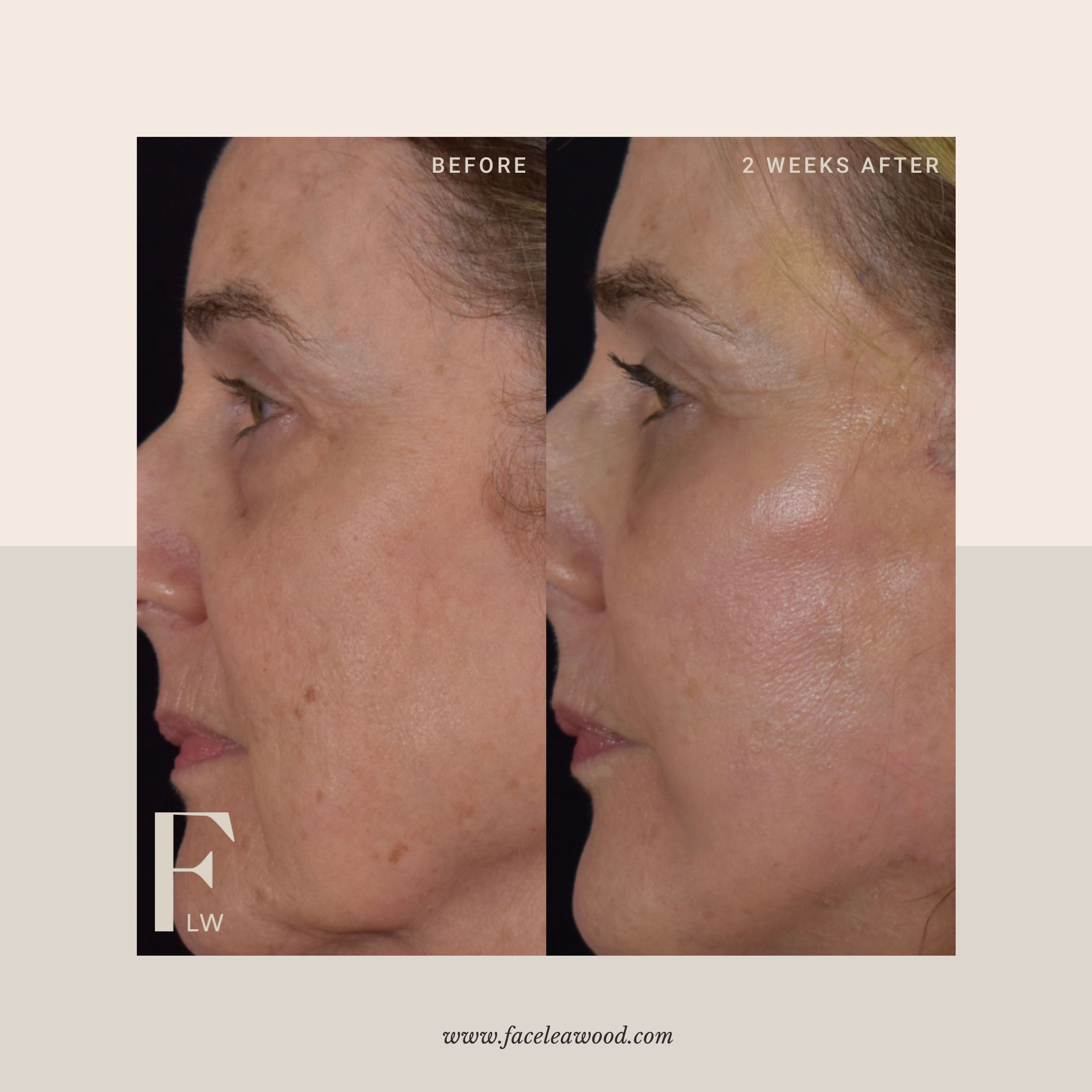Medical Grade Chemical Peel
At FACE Leawood, we offer chemical peel treatments that help to improve skin flaws, including scars, wrinkles, fine lines, uneven patches, hyperpigmentation issues, and more. Chemical peels work by removing dead or damaged skin cells with the application of a customized solution on your skin, which causes the top layer to peel off.
As your skin heals and begins to rejuvenate and repair itself, you should notice a clearer, smoother complexion. A chemical peel treatment is a noninvasive way to make your skin bright and is appropriate for the face, neck, and décollatage.
There are a range of depths of chemical peels - superficial, medium, and deep. Superficial chemical peels help in sloughing the very top layer of dead cells. These are relatively light, well-tolerated, and may be performed in various settings. Medium depth chemical peels are sometimes considered "medical grade chemical peels" are typically performed in a physician's office, penetrating a bit deeper into the skin and yielding more significant peeling and results. Deep chemical peels penetrate to the very bottom layers of the skin and have somewhat fallen out of favor given their risk of long-term scarring and hypopigmentation.
At FACE Leawood, we offer the VIPeel system, with several different medium depth chemical peels, selected to meet and address your specific skin needs.
Various reasons to consider a VIPeel:
Hyperpigmentation
Melasma
Fine lines and wrinkles
UV damage/sun spots
Loss of elasticity
Each VIPeel formation is a bit different, depending on your specific skin concerns, but consists of the following key ingredients:
Retinoic acid: The powerhouse acid that penetrates the skin, inhibits melanin production, and increases cell turnover.
Trichloroacetic acid: TCA targets signs of aging by boosting collagen and exfoliates the skin,
Salicylic acid: Prevents inflammation by killing bacteria, suppresses sebum production, and cleanses the pore lining.
Phenol: The secret weapon that numbs the skin, allowing for more comfortable application.
Ascorbic acid: A powerful antioxidant that binds free radicals, evens skin tone, and helps prevent future damage.
Kojic acid: Fights discoloration and brightens the skin.
Each patient's degree of peeling at home will be a bit different.
Skin type, home skincare regimen, and routine pre-peel exfoliation all play a role in how much or how little a patient will peel.
Generally, we tell patient peeling begins around 24-48 hours post-treatment and is completely finished by day 5-7.
Contraindications to VIPeel treatment:
Allergy to aspirin or phenol
Inflamed skin with open lesions
Accutane use within the past 6 months
Pregnancy or breastfeeding
In-office VIPeel treatment appointments typically last about an hour long. Patients can expect the following events during their appointment:
Arrive, have photos taken
Review treatment ins and outs
Thoroughly cleanse skin
Skin prep by our team
Peel applied - takes approximately 15-20 minutes
Review all at-home instructions
Depart with take-home kit
Day 2 after chemical peel
Day 4 after chemical peel
Tips for post-peel care
General
Your skin may appear bronzed, tan, or pink during the first 24-48 hours, before peeling begins, and it may feel tight.
As a general rule, treat it like a sunburn: avoid the sun, avoid excessive heat, and avoid excess sweating.
If you experience significant itching or discomfort, call our office (even after hours).
Pigmented areas may darken as your skin prepares to peel. This is normal.
Each morning: gently cleanse, apply SPF, and Post Repair cream . Reapply throughout the day as needed.
Peeling
Days 3, 4, and 5 typically are the peel-iest.
Avoid picking, pulling, or rubbing peeling skin - this can cause scarring and hyperpigmentation. If desired, you can trim the loose skin with clean scissors.
Towelettes
The towelettes we send you home will potentiate the peel and expedite the peeling process. They are not meant to refresh but rather, to treat. They may cause slight stinging or itching.
If itching occurs, apply Post Repair cream. An oral antihistamine (Claritin, Benadryl) may also help the itching.
Any towelettes should be used within the first 48 hours. Discontinue them once peeling starts.
Glow and Protect
You may resume your normal skin care routine after day 7.
Ensure daily SPF use to protect your newly treated skin.
For best results, repeated peels every 4-6 weeks are recommended.




